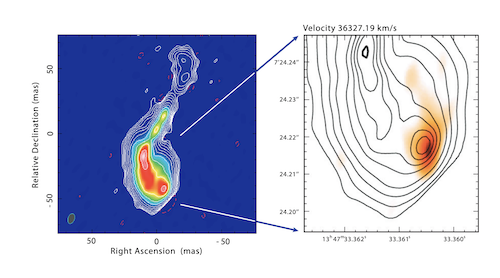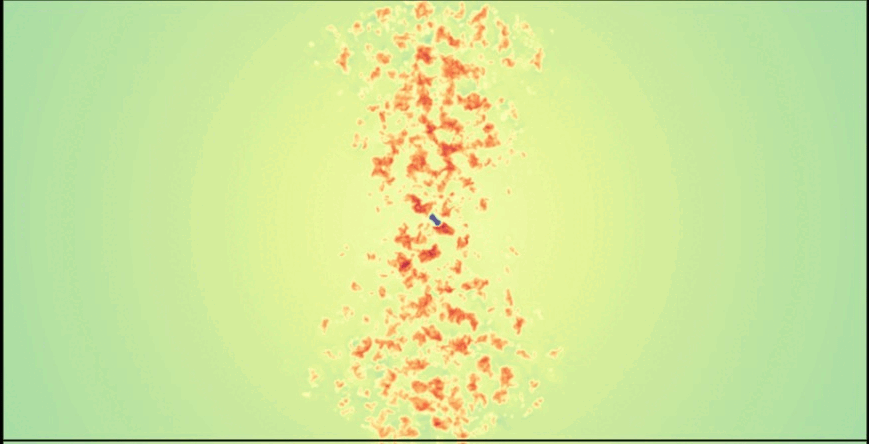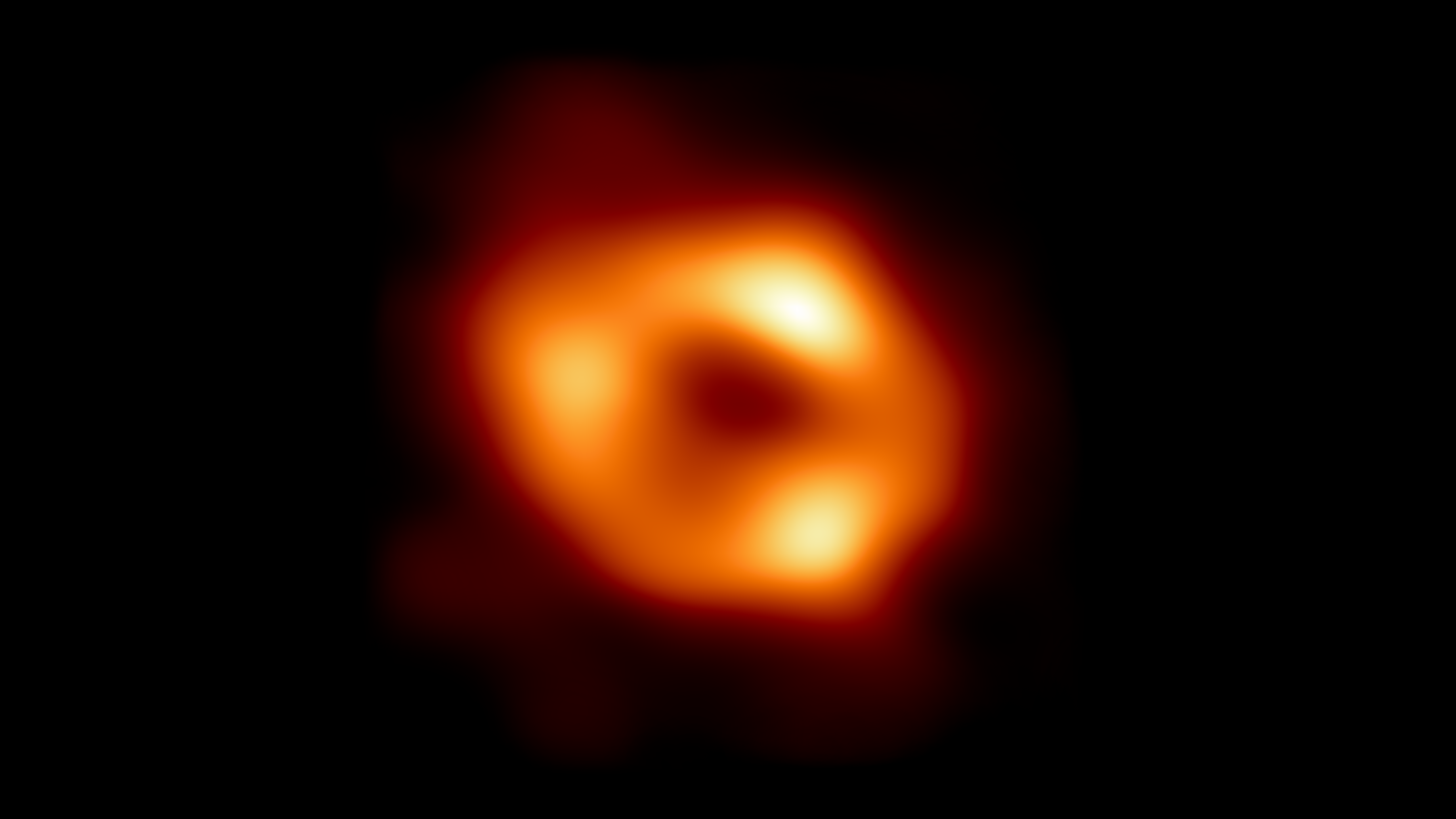All galaxies have massive black holes in their centres, with masses ranging from tens of thousands to tens of billions that of the Sun. The high end of this population is called supermassive black holes (SMBH), and these are hosted by the most massive galaxies. They can have active periods when they become cosmic powerhouses that turn the gravitational potential energy of surrounding gases to pure energy radiated across the electromagnetic spectrum, and kinetic energy in the form of well collimated, relativistic jets. These are called active galactic nuclei (AGN).
Quasars, Blazars, and the history and future of the Universe

The most powerful AGN are historically called quasars, because of their stellar appearance in optical surveys. Those that produce relativistic jets which point close to our line of sight are called blazars. The emission from jets approaching us appear boosted by relativistic effects, making them even more prominent. At the radio frequencies, we see synchrotron radiation from electrons accelerated by magnetic fields. Very long baseline interferometry (VLBI) observations, especially those at the highest frequencies (corresponding to centimetre to millimetre wavelengths) provide the highest spatial resolution images, which allow us to investigate the fine structures of blazar jets. Furthermore, the innermost region of AGN - the jet formation regions in the vicinity of supermassive black holes - can be approached, avoiding the optically thick synchrotron self-absorbed emission. High frequency images can be associated with lower frequency data, and provide valuable information on plasma-physical condition of the jet via spectral index distribution.
Blazars can be seen up to great distances. As we observe these objects at larger and larger distances, their emission shifts towards the red part of the spectrum due to the expansion of the Universe. The highest redshift blazars have been studied extensively by JIVE staff using the European VLBI Network (EVN) and other instruments. These can be used as cosmological tools, probing the expansion of the Universe. Another research topic is binary AGN, which can tell us about processes in the early Universe driving the growth of supermassive black holes and, ultimately, galaxy evolution.
The impact on galaxy evolution: AGN feedback
The supermassive black holes inhabiting the centres of massive galaxies become active when the ambient gas falls towards them, a process that is called accretion. This results in the emission of an enormous amount of energy that influences the evolution of their host galaxies. The nuclei that produce relativistic jets are called radio-loud AGN. These jets and the ambient interstellar medium (ISM) interact and affect each other: while the radio jets make the ISM turbulent and drive fast outflows, a dense ISM slows the growth of these radio jets. Understanding the nature of this jet-ISM interaction, a.k.a. AGN feedback, which is crucial to understand the role of radio AGN in galaxy evolution.

The EVN, with its high sensitivity, has helped us zoom-in to the cold gas in the regions very close to the SMBHs and show that the impact of the radio jets in the nuclear region is indeed significant. Such studies have shown that these jets drive fast outflows and also make the ambient ISM highly turbulent. Additionally, the high spatial resolution achievable by the VLBI networks has shown that the cold gas is distributed as clumps enabling a stronger coupling between the radio jets and the ISM. All these results have helped verify the theoretical models on jet-ISM interaction, thereby enabling us to take first steps towards quantifying the feedback from radio AGN.
At JIVE we are actively involved in studying jet-ISM interaction in different classes of radio AGN in order to further our understanding of the role of these sources in galaxy evolution.
AGNs with the EHT

The gas that is drawn towards a supermassive black hole forms an accretion disc and circles inwards, while releasing energy in the process. Beyond a point no radiation can escape from the vicinity of the black hole: this is called the event horizon. The path of the light rays leaving the innermost regions appear strongly curved for a distant observer, due to the immense gravitational fields. The highly distorted image from this region has received the popular name "the black hole shadow", which is somewhat inaccurate, but it attracts our imagination. The accurate geometry observed allows us to probe the SMBH themselves (e.g., their spin), but also theories of gravity as well.
The Event Horizon Telescope (EHT) provides unprecedented spatial resolution, using telescopes around the globe at frequencies of 230 GHz (and soon 345 GHz) - currently the highest feasible with VLBI. This has resulted in the first images of the shadow of black holes in M87 and our Galaxy. The images have already resulted in extensive studies of the physics close to supermassive black holes. The striking similarities of the two images in spite of the black hole masses differing by three orders of magnitude, indicates that gravity is the dominant force in creating the ring-like feature.
JIVE staff has contributed to these groundbreaking results, and continue to study the variability, the nature of rotating hot-spots, and polarisation (both linear and circular) properties of the emission near horizon scales.
Image information (in order of appearance)
Global VLBI observations showed the first direct evidence for AGN-jet driven feedback in a deep, HI absorption study. The jet impacts the interstellar medium, resulting in fast outflow of cold atomic gas on 100 pc scales, and ultimately driving a large-scale molecular outflow. Credit: Morganti et al. 2013.
Four-step simulation of a black hole with a low energy radio jet that clears the centre of a galaxy like a leaf blower. There are 200,000 years between each image. Credit: Mukherjee et al.
First image of Sagittarius A* (or Sgr A* for short), the supermassive black hole at the centre of our galaxy. It’s the first direct visual evidence of the presence of this black hole. It was captured by the Event Horizon Telescope (EHT). Credit: EHT Collaboration.
